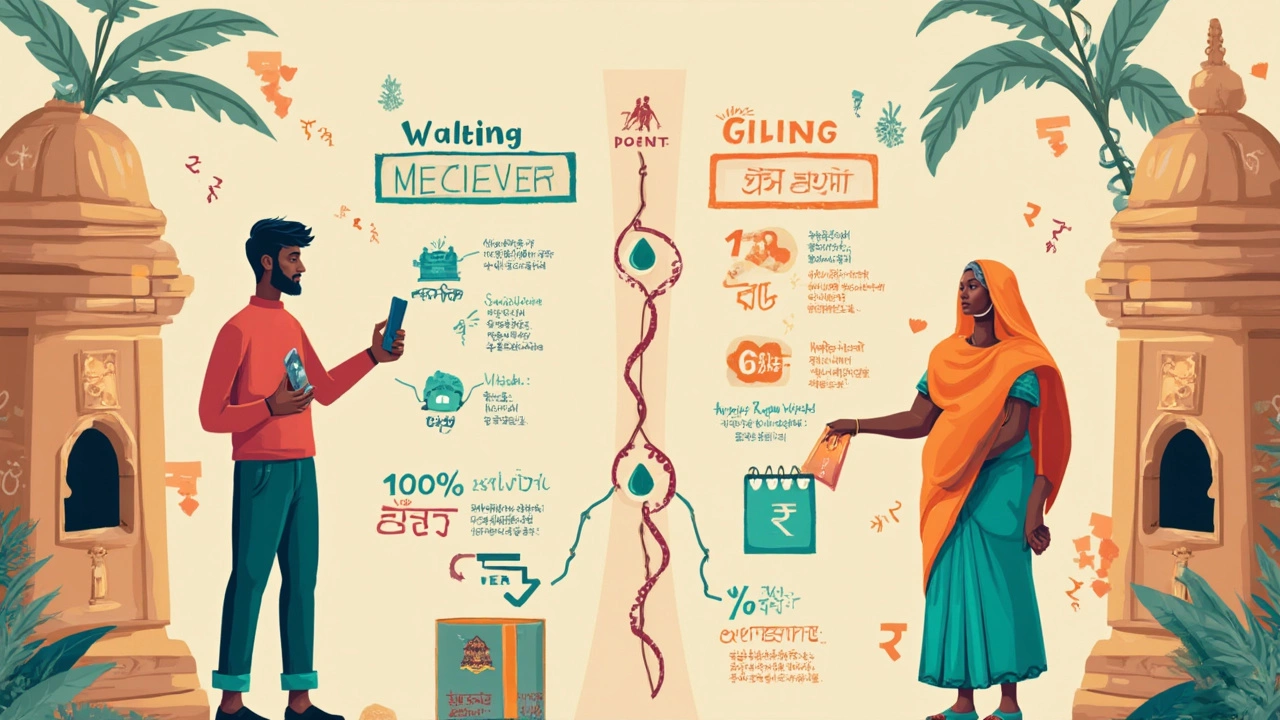When people talk about giving to charity, most picture dropping coins in a box or mailing off a check. But things have changed fast—especially in the last few years. The easiest and most popular way people give now? Online donations, hands down.
Seriously, clicking a button and donating from your phone has pretty much taken over. Whether it’s giving to a big-name cause during a livestream, using a crowdfunding page, or setting up a monthly plan online, it’s just quicker, safer, and more transparent than ever. And with all those websites and apps showing you right away where your cash is going, it’s no shocker this is where nearly two-thirds of donations happen these days.
If you’re not sure which way to give does the most good or feels right for you, keep reading. There are trade-offs—direct online donations mean less event hoopla, but you get more control and connection with where your money lands. And there are a few tips that can help you make every buck go the extra mile.
- How Most People Donate Today
- Why Online Giving Leads the Pack
- Charity Events vs. Direct Donations
- Emerging Trends in Charity Giving
- Quirky Facts and Little-Known Stats
- Smart Tips for Choosing Your Method
How Most People Donate Today
The days of writing checks are fading. Now, over 60% of all charity donations in the US are made online. It’s super convenient—no trip to the mailbox or ATM, just a tap or two on your phone. Online donation platforms like GoFundMe and JustGiving, along with direct nonprofit websites, are where most folks send their cash.
But there’s more to the story. Social media fundraisers have exploded, especially on Facebook and Instagram. They reach friends and family fast, and people love seeing instant updates on donations. Remember that viral ice bucket challenge? It made crowd-powered charity mainstream. Email is still in the mix, too. A lot of nonprofits send out links in emails that take you straight to donate. Even text-to-give campaigns are picking up steam—just one word sent to a number, and you’ve donated.
Let’s break it down with some recent stats from 2024:
| Donation Method | Popularity (%) |
|---|---|
| Online | 62% |
| In-person events | 18% |
| Mail (checks/cash) | 12% |
| Text-to-give | 8% |
One trend you can’t ignore is recurring monthly donations. Most big charity platforms practically beg you to hit the “monthly” button instead of just giving once—it gives nonprofits a steady stream of support.
Of course, some folks still love an old-school charity event like a gala or fun run. But those are less about giving the most cash and more about community and networking. Direct giving online tends to raise more overall, and it’s growing every year.
If you’re thinking of donating, the online route saves time and sometimes even lets you track exactly how your gift makes a difference. That’s a big deal for people who want to feel more connected to their impact.
Why Online Giving Leads the Pack
If you’re wondering why online donations rule the world of giving, the answer is simple: ease and speed. No paper forms, no standing in line, no licking stamps. You can support your favorite charity from your couch, while scrolling your feed, or even during a two-minute coffee break. It’s all designed to be frictionless. And these days, we're glued to our devices, so it just fits.
There’s also the trust factor. Legit charity sites add transparency—think receipts, donation trackers, and quick feedback. Want to know right away where your money’s going? Most online platforms show you exactly what’s happening, which boosts confidence for both newbies and longtime givers.
Social media also gives online giving a boost. You've probably seen campaigns go viral—think GoFundMe, Facebook fundraisers, or that ice bucket challenge a while back. Peer pressure, in a good way, inspires people to give when friends and family share causes online. It turns giving into something social and satisfying, not just a box to check.
Some hard facts: according to a 2024 charity sector report, over 63% of all individual giving in the US happened online. Mobile donations are rising too, with almost half of under-40 donors preferring to tap ‘Donate’ right from their phone.
| Method | Share of Total Charity Donations (2024 US) |
|---|---|
| Online Giving (Web and Mobile) | 63% |
| Event Donations | 19% |
| Mail/Checks | 13% |
| Other | 5% |
Fees can be a factor—some platforms take a small cut—but many nonprofits partner with services that lower or waive fees. Plus, recurring donations are easier than ever. No need to remember to send money each month—you can set it and forget it, like Netflix for giving.
Last tip: always double-check that the online site is legit. Scams exist, so look for well-known sites and secure ("https") pages before you punch in your card details.
Charity Events vs. Direct Donations
When people think of charity, big events like galas, fun runs, or auctions often come to mind. These charity events do more than just raise money—they pull people in, create buzz, and spread the word about the cause. Take charity runs: In the U.S. alone, events like Relay for Life or Race for the Cure raise tens of millions every year. It’s social, it feels good, and you get to meet like-minded folks.
But here’s the real deal—while charity events can rake in big funds, they’re pricey to pull off. Event costs, staff, food, venues, and promo materials eat into donations. According to Charity Navigator, traditional events can eat up 20-30% of the money they bring in.
Direct donations—say, giving online or sending money straight to a cause—are usually way more efficient. No dinners or T-shirts to fund, just you and the organization. The result? More of your cash lands with the people who need it. For example, in 2023, online donations hit record highs, with 63% of donors choosing the web as their go-to way to give, and more than two-thirds of that money reached programs directly without heavy overhead.
Here’s a head-to-head breakdown:
| Factor | Charity Events | Direct Donations |
|---|---|---|
| Cost | High (20-30% for overhead) | Low (usually under 10%) |
| Experience | Social, fun, engaging | Quick, private, flexible |
| Reach | Local or regional | Global, 24/7 |
| Impact | Raises awareness | Most of your money to the cause |
So which should you choose? If you love community and want to show public support for a charity, events are great. If you want your donation to have instant and maximum impact, direct giving is the champ. Either way, you’re doing good—the key is to pick what feels right and matches your own style of giving.

Emerging Trends in Charity Giving
Charity isn’t just about dropping coins in a jar anymore. Over the past five years, new ways of giving have exploded. It’s easier than ever to pitch in, no matter where you are or how much you have.
One of the biggest trends: online donations straight from your phone or computer. A legit survey from Charities Aid Foundation in late 2024 showed that 61% of people who donated did so through digital channels. That means more folks are skipping the bake sales and fundraising dinners, and just giving with a few clicks.
Another hot trend is peer-to-peer fundraising. Apps like GoFundMe and JustGiving let anyone set up a fundraising page. Your friends and family can chip in directly, and the results are often fast. These platforms even keep track of goals and show updates so you know exactly where things stand.
Then there’s the rise of “round-up” donations. Some apps let you round up your spare change every time you make a purchase, automatically donating small amounts to your chosen cause. For people who think they can’t afford big donations, this method adds up quietly in the background.
| Emerging Trend | Reported Usage (2024) |
|---|---|
| Online Donations | 61% |
| Peer-to-Peer Fundraising | 27% |
| Round-Up Through Apps | 12% |
Crypto donations are picking up steam too. In 2023-2024, the number of charities accepting Bitcoin and other cryptocurrencies grew by nearly 55%. It’s a hit with younger donors who already use crypto for other stuff. But heads up—crypto donations can be tricky for tax reasons, so double-check before you try it.
And don’t forget influencer-led fundraising. More celebrities and online creators are using their platforms to spotlight causes and raise big money fast—sometimes in a single live stream or challenge. This works especially well with younger people who want to support a cause and feel part of an online community.
If you’re thinking about the best way to give, these trends can be a game-changer. The more tech steps in, the easier and more personal charity gets.
Quirky Facts and Little-Known Stats
Everyone loves a good stat or strange tidbit about charity and donations. Some of these might actually sway you toward a certain kind of giving, or at least make you sound smart at your next dinner party.
Did you know the most donated-to cause in the world is actually disaster relief? Whenever there’s a big crisis, the money floods in online. For example, when wildfires or hurricanes hit, platforms like GoFundMe reported donation spikes as high as 500% in just a week.
Americans give more to charity than any other country, and almost 70% of adults say they gave something last year. That’s a bigger share than folks who own a pet! Also, more than 60% of donations in 2024 came through digital channels—that’s an all-time high, according to tech charity hub Classy.org.
How about birthdays? Facebook raised over $1 billion through birthday fundraisers alone by 2023—most people picked local animal shelters, health causes, or kids’ charities.
Here’s a quick look at how people are donating by method based on last year’s numbers:
| Donation Method | Percent of Total Donations |
|---|---|
| Online platforms | 62% |
| Charity events | 18% |
| Text-to-give | 6% |
| In-person cash/check | 14% |
If you’ve ever rounded up at a grocery store for charity, you’re not alone. Retail checkout donations in the U.S. hit $749 million in 2023. Even those tiny $1 “add a buck” prompts add up fast.
Want to feel extra good about your giving? Research shows donors who set up monthly recurring donations end up giving 4 times more per year than one-off gift givers. Companies also get in on the act—about 65% of Fortune 500 firms now match their employees’ charity donations.
Smart Tips for Choosing Your Method
Donating should feel good and make sense for you. There’s no single "best" way to give, but some approaches really do work better for different folks. Here are some practical tips to help you choose how to make the most impact with your charity donations.
- Check the charity’s reputation. Use Charity Navigator, GiveWell, or the BBB Wise Giving Alliance to see if the organization spends money the right way. Some charities use over 30% of donations for “administrative costs”—KNOW where your cash is going.
- Online giving is convenient, but double-check the website’s security. Look for “https” in the address bar and stick with well-known giving platforms. Phishing and scams are unfortunately common.
- Match your goals. Want your money to go straight to a cause (like medical aid or hunger relief)? Direct donations to the group’s website usually cut out the middleman. If you want to support a local community or meet new people, a charity event (like a run or auction) might do the trick.
- Look for matching gifts. A lot of companies will match your charity donations dollar-for-dollar. As of 2024, roughly 65% of Fortune 500 companies offer some sort of matching gift program.
- Think about recurring donations. Setting up a small monthly donation is often more helpful for nonprofits than a single lump sum. This gives groups a steady stream of support and helps them plan ahead.
- Don’t forget about fees. Big crowdfunding platforms and payment providers can take between 2% and 7% of your donation as a processing fee. If you give directly on a nonprofit’s website, those fees are often lower. Here’s a quick comparison:
| Method | Average Fee Percentage |
|---|---|
| Direct via Charity Website | 1–3% |
| GoFundMe | 2.9% + $0.30 per donation |
| PayPal Giving Fund | 0% |
| Facebook Fundraisers | 0% |
Basically, think about what’s easiest for your wallet, fits your style, and gives the charity more of your money. If you ever feel pressure to give in a way that doesn’t feel right, trust your gut and stick to what makes you comfortable. There is no wrong way to help others, as long as it’s honest and safe.





